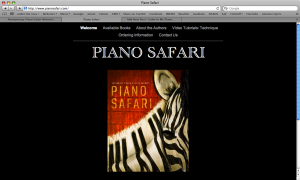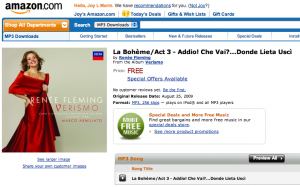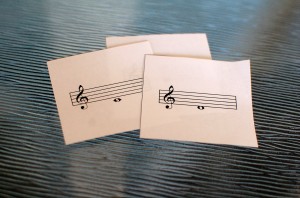 I recently heard about a brand new piano method series, called Piano Safari, written by Katherine Fisher and Julie Knerr, both grads from University of Oklahoma’s excellent Piano Pedagogy program. The series looks very intriguing. I would like to try out the series the next time I get a new beginner student!
I recently heard about a brand new piano method series, called Piano Safari, written by Katherine Fisher and Julie Knerr, both grads from University of Oklahoma’s excellent Piano Pedagogy program. The series looks very intriguing. I would like to try out the series the next time I get a new beginner student!
The element that I find most unique about this series (based on what I’ve heard/read so far) is the technique exercises (suitable for beginners) which are utilized across the Musicianship and Repertoire books, and into later repertoire. Each exercise is named in accordance with the safari theme. An example: if you ask the student to play the “Zechariah Zebra” exercise, they would play the rhythm: eighth-eighth-eighth-eighth-quarter-quarter (think “Zech-ar-i-ah Ze–bra–” ) on Middle C, then on D, working up to G, and then back down to C. Check out the technique tutorials they have on their website to see a this and more exercises in action! Other exercises include: “Kangaroo,” “Elephant Stomp,” and “Monkey Swinging,” and “Ancient Tortoise.” Just think how exciting it could to learn piano while going on a safari!
As an alternative to using the Musicianship and Repertoire books of the Piano Safari method, teachers may instead purchase the Technical Exercises and Rote Pieces book, which is designed to supplement whatever current method the student is using. It contains all the technical exercises and rote pieces from the both the Musicianship Book 1 and Repertoire Book 1.





 In a post last week, I mentioned Jim Brickman — composer of new age solo piano music (as well as some pop music with vocals). His music is great to play when you are stressed out and just want to play something relaxing that doesn’t require as much concentration as classical music. =D I thought I’d share some of my favorites among his compositions.
In a post last week, I mentioned Jim Brickman — composer of new age solo piano music (as well as some pop music with vocals). His music is great to play when you are stressed out and just want to play something relaxing that doesn’t require as much concentration as classical music. =D I thought I’d share some of my favorites among his compositions.
 Run on over to Amazon.com! They currently are offering a free mp3 download of
Run on over to Amazon.com! They currently are offering a free mp3 download of 
 Just added to the
Just added to the